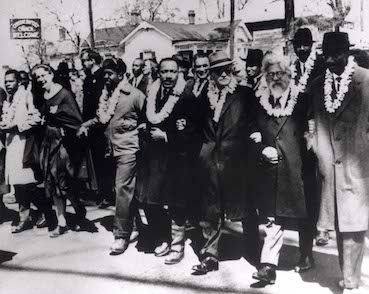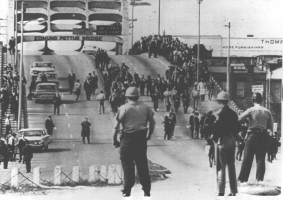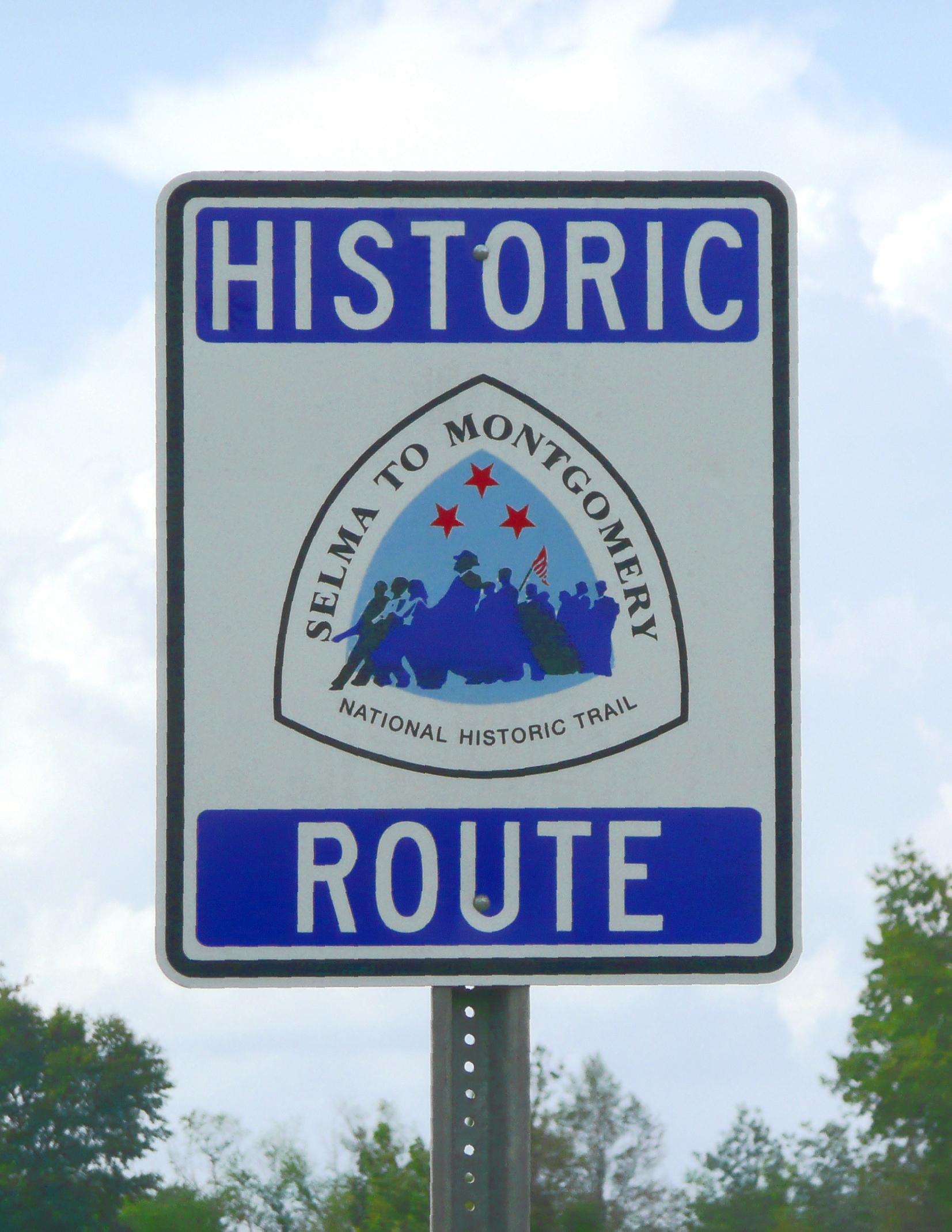The Selma Marches for Voting Freedom
The Selma to Montgomery March to promote African-American voting rights was actually three marches, totaling 54 miles, from Selma, Ala., to the State Capitol in Montgomery. The marches took place in 1965, on March 7, March 9, and March 21. Marchers reached Montgomery on March 25, and Martin Luther King, Jr., gave a famous speech.
The drive toward full voting rights for African-American had continued after the passage of the 1964 Civil Rights Act, which had not entirely addressed the legacy discriminatory practices of many state legislature. Selma, Ala., soon became a center of activity.
Dallas County officials were in the habit of refusing or otherwise obstructing registration efforts of African-Americans, and King and other prominent leaders of the Southern Christian Leadership Conference (SCLC) led protests in and around Selma beginning in January 1965. King himself was assaulted at a protest. In response to continuing resistance, including the shooting death of an activist during a peaceful march, the SCLC announced a protest march of dozens of miles, from Selma to the Alabama State Capitol, in Montgomery. The march had gained nationwide attention, and march leaders reiterated their call for a federal voting rights law that would remove existing restrictions. On March 15, President Lyndon Johnson, in a nationally televised address, announced his support for such a law and urged Congress to send him one. Johnson assumed command of 1,900 members of the Alabama National Guard and also sent 2,000 soldiers from the U.S. Army to protect the Alabama marchers, who set out again on March 21 and made it to Montgomery on March 25. Congress passed the Voting Rights Act later that year, and President Johnson signed it into law. The route that the Selma-Montgomery marchers took was along U.S. Route 80, which was known in Alabama at that time as the “Jefferson Davis Highway,” after the President of the Confederacy. The march route is now a U.S. National Historical Trail, signposted as the Selma to Montgomery Voting Rights Trail. |
|
Social Studies for Kids
copyright 2002–2025
David White



 Marchers, unarmed, set out from Selma on March 7. Leading the march were civil rights leader John Lewis and other prominent of the SCLC. When they crossed the Edmund Pettis Bridge and entered Dallas County, they encountered violent resistance, including the use of clubs and the firing of tear gas. A few state troopers on horseback charged the crowd. This event became known as “Bloody Sunday.” One of the march’s leaders, Amelia Bonyton, was beaten senseless, and this was shown on television.
Marchers, unarmed, set out from Selma on March 7. Leading the march were civil rights leader John Lewis and other prominent of the SCLC. When they crossed the Edmund Pettis Bridge and entered Dallas County, they encountered violent resistance, including the use of clubs and the firing of tear gas. A few state troopers on horseback charged the crowd. This event became known as “Bloody Sunday.” One of the march’s leaders, Amelia Bonyton, was beaten senseless, and this was shown on television. The second march was on March 9. The marchers didn’t get very far. It looked like another confrontation was imminent, but the crowd that had gathered to oppose the march eventually stepped aside. The marchers, however, went no further that day, obeying a court order not to march on to Montgomery.
The second march was on March 9. The marchers didn’t get very far. It looked like another confrontation was imminent, but the crowd that had gathered to oppose the march eventually stepped aside. The marchers, however, went no further that day, obeying a court order not to march on to Montgomery. The march had gained protesters since it began, and the number of people who walked with King and other march leaders on that day was about 25,000; among them was
The march had gained protesters since it began, and the number of people who walked with King and other march leaders on that day was about 25,000; among them was 
